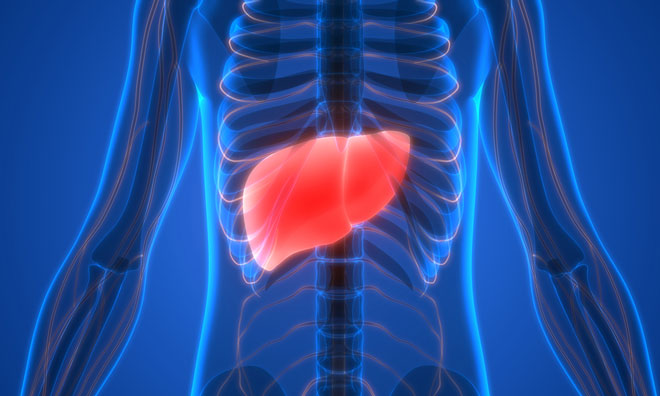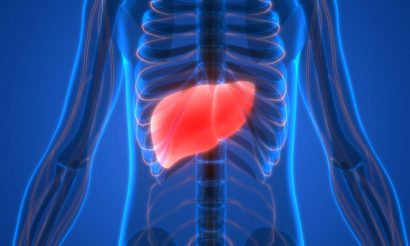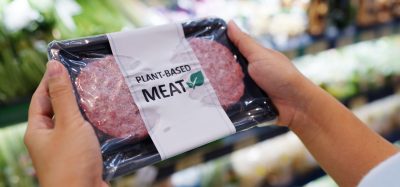Demystifying the cocktail of various chemical substances present in our diet
- Like
- Digg
- Del
- Tumblr
- VKontakte
- Buffer
- Love This
- Odnoklassniki
- Meneame
- Blogger
- Amazon
- Yahoo Mail
- Gmail
- AOL
- Newsvine
- HackerNews
- Evernote
- MySpace
- Mail.ru
- Viadeo
- Line
- Comments
- Yummly
- SMS
- Viber
- Telegram
- Subscribe
- Skype
- Facebook Messenger
- Kakao
- LiveJournal
- Yammer
- Edgar
- Fintel
- Mix
- Instapaper
- Copy Link
Posted: 6 December 2016 | Martin Michaud, Biochemist, Chemist, M.Sc. Biology, MMNA Consultants | No comments yet
Martin Michaud, biochemist and consultant seeks to demystify the plethora of chemicals that we consume on a daily basis…


Every day we eat all sorts of food that we either prepare ourselves from scratch, buy from a caterer, eat at the restaurants, etc. To this we have to add the water, food dietary supplements and vitamins, the medicine/drugs or other comfort items such as dark chocolate, vitamin water or speciality coffee/tea.


If we were to sum up all of the chemical substances present in the food products we eat in our diet on a single day; we would realise that we are exposed to an awful lot of chemicals. The first thing to consider, and not to forget, is that our body is also made up of an extremely large variety of chemicals that are well organised in this wonderful and enjoyable concept that we call “life”.
So being exposed to chemicals is not a negative event per se.
The issue with chemicals is a matter of quantity. Too much of this or not enough of that can make a difference.
But what difference does it makes?
The difference is the following. Everything we eat or that enters our gastrointestinal tract has to be digested and absorbed in order to replenish our cells, help us think, grow, heal and much more. The vast majority of substances are absorbed through the small intestines and then transferred to the liver. One key step in this process is that the liver will segregate between the substances that can readily continue in the blood stream or the body to reach the target organs, the brain or muscles and the substances that have to be modified in order to be directed towards excretion. So the liver acts as a filter that monitors all the substances we eat. This precious function serves to make the best use of all that we eat and to get rid of the substances that could cause harm or health problems or those that are in excess.
For an individual that has no health problems and doesn’t take any medications/drugs, is active and doesn’t drink too much alcohol or doesn’t smoke; the liver performs its task very well and the exposure to substances that can cause harm and or health problems remains low unless there are environmental pollutants or other chemicals around that he is exposed to.
For a large number of people with a weight surplus, that drink too much alcohol, that take medications, smoke, use drugs or don’t eat very well; the liver will be being challenged a whole lot more.
What happens when our liver is challenged?
Well, this is bad news because it means that the segregation process driven by the liver is much less efficient and the substances that are required for maintaining a good health are not distributed properly. It also implies that some of the substances that would normally be neutralised and excreted are going to get through in our body. This can eventually get even worst because some of those substances accumulate in fat patches of our body.
So our liver is the treatment and distribution centre of our body and if we overload it; it fails.
Think of a distribution centre with 100 truck doors. When 90 of the doors are occupied and that the loading and unloading process goes on and that trucks come and go without jams; there are good chances that the product will be in the right spot and no issues or mixing up can occur. The 10 unoccupied doors act as a buffer in case of additional delivery and everything is fine.
Now think of the same distribution centre with its 100 doors overloaded with trucks at their doors waiting in line and putting pressure to unload their stuff with additional pressure from the owner. What happens? There will be product placed in the wrong spot, products that were supposed to be refused will be accepted and put at the place of a desired product, mixed-up with orders and delivery papers, etc.
Well this is exactly what happens with your body when it is overloaded with chemical substances.


It is very important to mention that all the chemical substances that are included in the food or ingredients or anything we can buy for human consumption are extensively evaluated and that very serious risk analysis is conducted before allowing any food manufacturer to use them and put them on the market. Food risk analysis is a serious and scientifically-documented exercise that’s been adopted by all industrialised countries for more than 60 years now (see reference 6 and 7). It is also reviewed and updated to take into account the new scientific knowledge and technological changes.
So a legitimate question would then be:
How do we know if we are exposed to too much chemical substances in a day?
Well the first source of information is the ingredient list of the product that you buy. It gives you right away the list of food ingredients, food additives, food preservatives, sweeteners, spices, vitamins, minerals, allergens, etc. that you are exposed to.
Unfortunately the nutrition label cannot reflect the fact that we could be exposed to a large amount of substances when we consume food “x” or food “y” and there is no link between the nutritive value of a food and the number of substances it contains that can be readily established from the nutrition panel.
The other sources of information are the tremendous amount of data available on food additives, food preservatives, sweeteners, allergens, spices, vitamins, minerals, food contaminants, etc. published by the different regulatory authority bodies. Unfortunately these sources of information used to be very difficult to reach and hard/tedious to understand for the vast majority of consumers. The good news is that a lot of them are now readily accessible and much easier to understand for the general public compared to what they used to be.
So what are those sources of information?
The national health departments, food safety agencies and the regulatory bodies from every industrialised country have a lot to offer on the web and it’s free and easy to access.
The ultimate source is the WHO bodies or subsidiaries such as JECFA, CODEX Alimentarius and also OECD.
From these highly competent sources, a major statement has to be made that will help anybody make-up his mind:
“With all the scientific knowledge available to this day; the clear and scientifically sound evaluation of the toxicity and safety level for any food ingredients, food additives, food preservatives, sweeteners, spices, vitamins, minerals, allergens, food contaminants, etc. is only possible for one substance at a time.”
So this means that the MRLs, the ADI, TDI, EDI or any other parameter for the evaluation of the safety and/or eventual toxicity of a given chemical substance are valid only for that one substance.
But does it reflect the reality of things?
Certainly not because we are exposed to a complete cocktail of chemical substances on a daily basis and this is the challenge for our body, for our liver, etc.
While the evaluation of individual different substances are scientifically and technically valid and robust without any doubt; our body and especially the liver holds the count and the total number of substances we are exposed to is the key information to take into account.
The good news is that regulatory bodies such as EFSA decided to tackle this issue with their ground breaking initiative called Mix Tox (see reference 1). The intent is to be able to establish scientifically the safety of a cocktail of substances that we are exposed to, just as it is the case when we eat foods on a daily basis.
Why do we, globally and collectively, have to do this?
- Because overloading our liver has negative consequences and we have to know and understand more of it to make better choice and to avoid health problems. One example is when you take too much alcohol for a very long period. Your liver gets lazy and loses the capacity to be fully acting as the segregating and distributing organs it is supposed to be. This can lead to a lot of secondary health problems such as hypoglycemia, ketoacidosis which can be quite problematic and life threatening (see reference 2).
- Because science cannot readily tell or predict (for all combinations) if there can be interaction between two substances or not and if those interactions can be deleterious or not. – If two substances are present at a sub-toxic very low levels; do they act synergistically or in sequence to be more toxic in the end? – If a group of substances are present at a sub-toxic very low levels; is it possible that they are less toxic compared to when they are used alone?- Unfortunately science doesn’t have the answer yet.
- Because we need to know what happens when our liver is already challenged with medication or other chemical substances and the additional load of substances we are exposed to daily. Does it contribute to make it worse? Are their combinations of food additives or food preservatives, medicine/drugs, etc. that we should avoid?
- Because we need to know what happens when our immune system is already challenged, when we are exposed to environmental pollutant or that we smoke cigarette plus the additional exposure to food additives, food preservatives, medicine/drugs, etc.
- Because we need to know if elderly people, or young children are more sensible to the exposure of a cocktail of substances than the rest of the population.
- Because we need to know why there are some individual that are exposed to multiple chemical substances without any apparent consequences. Are those individual different metabolically, genetically? Are the onset of health problems only delayed?
- Because we need to know if lifestyle has a role to play on the way our body deals with the exposure to chemical substances.
The liver is the detoxifier organ of the body. The more it is challenged, the higher the risks of having health discomfort or problems and not necessarily to the liver itself but maybe to the target organ that the substances that were not supposed to get through in your body have finally reached. Impacts on one’s health will not necessarily show up on the short term but the possibility of bioaccumulation of certain substances in fat such as environmental pollutant remains a possibility and a matter of concerns in all toxicity studies.
The evaluation of toxicity of a substance is based on a safety level and WHO-JECFA as well as all the participating countries used protection factors when they calculate the particular authorised use level of a substance in foods. The chemical substances authorised to be used in any item offered for human consumption are then either safe to be used without any limits else than palatability or they are to be used within a certain range and this is the key to protect the public health.
So in the end, we are exposed to a various mix of substances that are either safe or present at very low sub-toxic level on an everyday basis. This will probably not affect the vast majority of us and this is the basis of it all. 100% certainty about food safety is not possible or attainable.
Certifying that a chemical substance is safe means…
“…That the probability that this or that substance creates a health problem and/or complication is such that it might not eventually or possibly be responsible for the beginning of any sort of situation that could sometimes lead to some possible negative impact on health.”
So the level of protection is pretty high but again it is expressed for one substance at a time.
Some of the best strategies for everybody to minimise the exposure to substances or groups of substances that might eventually be overloading your body’s capabilities to deal with them are:
- Read the labels, read the labels and read the labels
- Minimise the exposure to foods containing a long list of substances such as food additives, food preservatives, sweeteners, allergens, etc.
- Cook your own foods from raw or minimally processed ingredients
- Drink alcohol moderately
- Ask your doctor/physician to make sure your medication is well balanced to avoid overloading your liver
- Exercise well according to your conditions
- Avoid smoking or using drugs
- Follow your physician or doctor’s advice and recommendations
- Vary your diet by eating all sorts of foods
- Avoid eating too much of the large fish predators as they are at the top of the food chain so they are subject to accumulate more contaminants
- Minimise the consumption of foods that are produced using growth stimulants or that are exposed to endocrine disruptor substances
- Buy food from a safe and recognised source
- Avoid exposure to environmentally toxic substances
- Handle and manipulate chemicals using the required precaution
- Follow IARC/WHO recommendation
It’s important to remember that it’s the cumulative daily exposure to many chemical substances such as pesticides, veterinary drugs, food additives, alcohol, medicine/drugs, growth promoters, food preservatives, sweeteners, and more that challenges our body and that in the end can contribute to create the conditions that might eventually lead to diseases and in some cases to cancer.


Some important facts to consider and remember:
- Even basic foods such as meat, fruits and vegetables contain a lot of chemical substances as mentioned in the scientific report publish by official food safety authorities such as CFIA in Canada or USDA in USA (see reference 3 and 4) but also in all industrialised countries (see reference 5). These substances are all at low level of individual toxicity when we consider ADI, EDI or MRLs but again: what happen when there are multiple substances present at sub-toxic or below ADI, EDI or MRL levels?
- Science is very good at determining toxicity of a unique substance with ultra-high precision but when it comes to a mixture of different substances; no officially scientifically validated methods exist
- As of today, we (including all the worldwide scientific community) don’t know how to evaluate the toxicity of mixtures of pesticide residues, growth stimulant, food preservatives, food additives, etc. but by the same token; we still eat food containing that kind of mixture of substances each individually at sub-toxic or very low levels everyday
- Nothing is wrong about food additives or any of those substances. They surely play a scientifically proven role and are useful but more research is needed to determine how to better use them (or not), manage and regulate the chemical substances used for human consumption to promote a better health and adopt an approach that closely matches the reality of the daily exposure.
References
1- http://www.efsa.europa.eu/en/topics/topic/chemicalmixtures (Mix Tox approach)
2- http://www.medscape.com/viewarticle/501977_5 (Alcohol physiopathology)
3- http://www.inspection.gc.ca/food/chemical-residues-microbiology/food-safety-testing-reports
5- http://ec.europa.eu/food/safety/chemical_safety_en
6- http://www.oecd.org/chemicalsafety/risk-assessment/
7- http://www.who.int/ipcs/en/
About the author
Martin Michaud is a biochemist and a professional chemist. He has worked in cancer research, contract lab services as well as in the food industry for the last 30 years. He is now a private consultant supporting companies in their continuous improvement efforts to a better regulatory compliance, process optimisation as well as competitiveness. He can be reached at [email protected].








